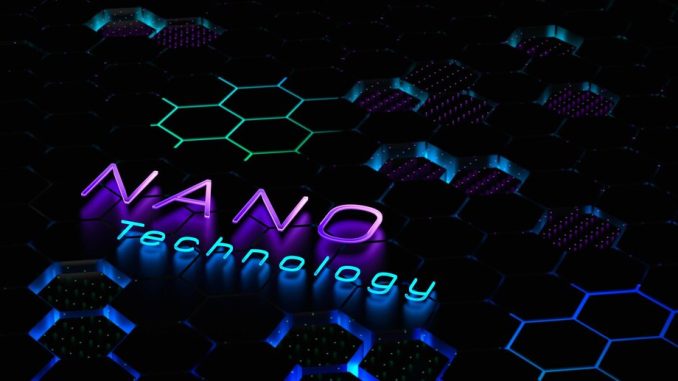
Nanotechnology, the nanoscale manipulation of matter, is a scientific and technological breakthrough. At the atomic and molecular level, it lets us design materials and technologies with incredible accuracy and control. Nanotechnology is transforming healthcare, electronics, environmental conservation, and material science, creating prospects that were previously science fantasy. Our essay explores nanotechnology’s vast and exciting universe, including its uses, ethics, and future possibilities.
The Basics Of Nanotechnology:
Nanotechnology operates at the nanoscale, where one nanometer is one billionth of a meter. At this size, materials have unique qualities and behaviours that may be used for new advances. Nanotechnology began with physicist Richard Feynman’s 1959 statement, “There’s plenty of room at the bottom.”
The 1980s scanning tunnelling microscope enabled scientists to control individual atoms. Nanotechnology involves precise atomic and molecular manipulation of materials. This control allows for the engineering of materials with customized characteristics, revolutionizing scientific and technological obstacles.
Applications In Medicine And Healthcare:
Nanotechnology has revolutionized medicine and healthcare. It promises to revolutionize illness diagnosis, treatment, and prevention. Nanomedicine is a prospective medical use of nanotechnology. Nanomedicine uses nanoparticles (1–100 nanometers) to deliver medications with unparalleled accuracy.
These nanoparticles may target particular cells or tissues, reducing medication delivery adverse effects. To avoid damaging healthy tissues and reduce chemotherapy side effects, cancer medicines may be given directly to tumour cells. Beyond medication delivery, nanotechnology provides novel disease diagnostics.
Nanoparticles may detect illness indicators early, allowing precise diagnosis. This allows prompt intervention, improving patient outcomes. Nanotechnology might improve tissue engineering and regenerative medicine. Nanomaterials can scaffold tissue development and healing.
This enables artificial organs, wound healing, and nerve tissue regeneration. Personalized medicine, tailored treatment, and innovative drug delivery systems are potential applications of nanotechnology in healthcare. These advances are game-changing healthcare innovations.
Nanotechnology In Electronics And Computing
Component miniaturization has transformed electronics and computers. Electronic gadgets become smaller, more powerful, and more energy-efficient as transistors and circuits decrease. Nanotechnology lets scientists design nanoscale materials and architectures, improving electrical device performance.
Innovation is paramount in nanoelectronics. Carbon nanotubes and graphene, which have exceptional electrical characteristics, are being studied. These materials may replace silicon-based transistors, allowing smaller, quicker electronics.
Quantum computing, based on quantum physics, is another exciting nanotechnology frontier. Quantum computers might handle complicated issues that traditional computers cannot. One of the most promising technologies in the industry is quantum computing, which will boost computer power.
Environmental Benefits
Nanotechnology saves the environment as well as laboratories and electronics. Nanomaterials provide novel environmental and sustainable solutions. Nanotechnology is used to regulate and remediate pollution. Nanoparticles fight corruption in several ways. They neutralize toxins, break down harmful compounds, and collect air and water pollutants.
This capacity to specifically target and destroy hazardous compounds aids environmental remediation. Nanotechnology helps with environmental management and renewable energy. Advanced solar cells use nanomaterials to improve efficiency and lower manufacturing costs. These advancements might revolutionize sustainable energy by making solar power more inexpensive and accessible.
Additionally, nanotechnology is improving water treatment. Nanomaterial-based filtration systems may eliminate even the smallest contaminants, delivering clean, safe drinking water, particularly in water-scarce areas. Nanotechnology addresses some of the world’s most significant environmental issues.
Nanotechnology In Material Science
Nanotechnology profoundly affects material science. Nanoscale materials have unique features. They may have particular electrical, optical, and thermal properties and are stronger, lighter, and more durable. These materials are transforming buildings, industry, and consumer goods.
Nanomaterials lead material science innovation. Carbon nanotubes, which are solid and lightweight, are used in aeroplanes, sports equipment, and medical gadgets. Another nanomaterial with exceptional electrical conductivity and strength is graphene, a one-atom-thick carbon sheet. Nanomaterials’ self-healing and self-cleaning characteristics are fascinating.
These materials self-repair and resist dirt. This means scratch-resistant spectacles and self-cleaning windows for users. In building and industry, it implies stronger, lower-maintenance materials. Nanotechnology in material science involves generating innovative materials that improve product performance, structure longevity, and industry sustainability.
Ethical And Safety Considerations
As nanotechnology advances, ethics become more crucial. Ethical issues, privacy problems, and nanomaterial abuse arise from nanoscale matter manipulation. Nanomaterial release into the environment raises ethical concerns about unforeseen repercussions. The long-term impacts of nanoparticles on ecosystems and human health remain unknown, creating concerns regarding safe use and disposal.
Another concern is privacy. Nanoscale monitoring and data collecting may violate privacy. Privacy and surveillance disputes may arise from tiny sensors and gadgets being used to infringe on individual rights. Responsible nanotechnology usage is crucial. Safe and accountable nanomaterial and application development needs ethical norms and solid regulatory frameworks.
Future Trends And Innovations
Nanotechnology has great potential. Several trends and discoveries are developing as nanoscale science pushes the limits. Nanotechnology integration across sectors is a significant development. Nanotechnology is enabling innovation in medicine, electronics, energy, and the environment.
This integrative method should solve complicated global issues. Nanotechnology’s involvement in solving these problems is notable. Nanomaterials for renewable energy and water purification will advance. Drug delivery, diagnostics, and customized medicine breakthroughs might alter healthcare.
Quantum computing, which can solve complex problems, is young yet promising. Quantum computers might transform cryptography and materials research as they become more realistic. Nanotechnology will shape materials, electronics, illness diagnosis and treatment, and environmental protection in the future years. Future advances open new scientific and technological frontiers.
Conclusion
Nanotechnology is launching several groundbreaking discoveries. Nanotechnology is changing how we solve scientific and technical problems in healthcare, electronics, environmental conservation, and material science. We must follow ethics and regulations in this tiny world. Responsible research and development are needed to use nanotechnology’s “small wonders” to improve society and the globe. Nanotechnology can solve some of the world’s biggest problems and change how we live, work, and study science.






Leave a Reply